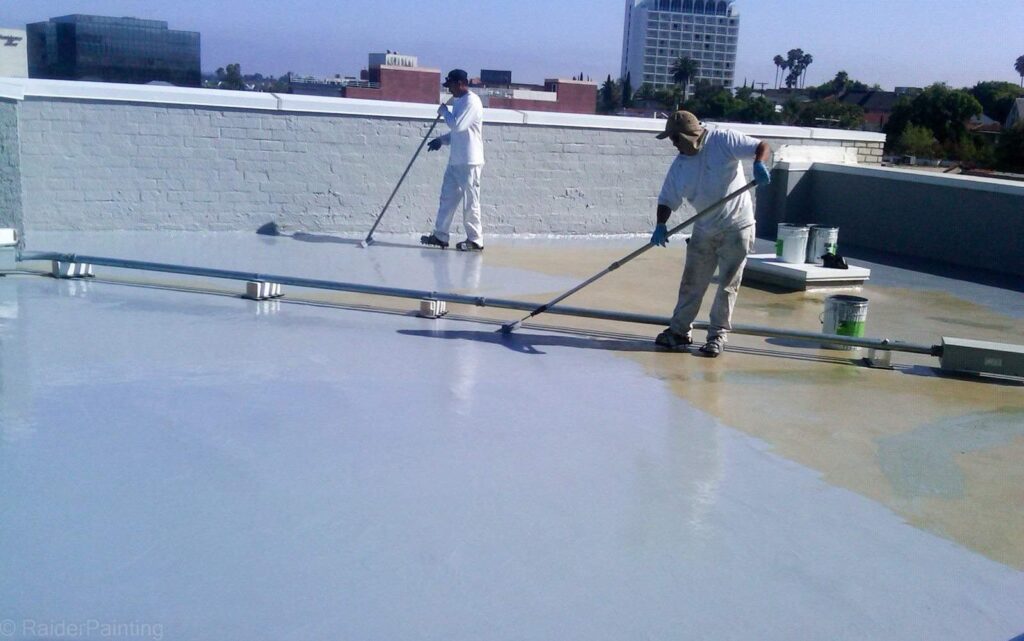
Commercial buildings are substantial investments that require vigilant care and maintenance. One aspect that should never be overlooked is waterproofing. Water intrusion can cause severe structural damage, leading to costly repairs and potential health hazards. In this article, we’ll explore the critical role of commercial waterproofing services and why investing in them is a prudent choice for property owners and managers. To learn more about the benefits of commercial waterproofing, click for more.
Understanding Waterproofing
Waterproofing Materials
Waterproofing materials are the first line of defense against moisture infiltration. Various materials are employed in commercial waterproofing services, each with its unique properties and applications. Understanding these materials is crucial when planning for waterproofing solutions.
Bituminous Membranes
Bituminous membranes are highly flexible and durable. They are often used in commercial roofing and foundation waterproofing due to their ability to withstand extreme temperatures and weather conditions. Bituminous membranes can be torch-applied, self-adhesive, or hot-mopped onto surfaces.
Liquid-Applied Membranes
Liquid-applied membranes offer versatility and ease of application. They are suitable for various surfaces, including concrete, metal, and wood. These materials create a seamless barrier when applied, making them ideal for irregularly shaped structures and complex architectural features.
Sheet Membranes
Sheet membranes consist of preformed sheets made from materials like rubber, asphalt, or thermoplastics. They are known for their durability and resistance to water penetration. Sheet membranes are commonly used in below-grade waterproofing applications.
Waterproofing Techniques
Commercial waterproofing services employ different techniques to address specific water intrusion challenges. Understanding these techniques can help property owners and managers make informed decisions about the most suitable waterproofing approach.
Positive-Side Waterproofing
Positive-side waterproofing is applied to the exterior of a structure to prevent water from entering the building. It is often used during the initial construction phase and is effective in keeping water away from the building’s envelope.
Negative-Side Waterproofing
Negative-side waterproofing focuses on the interior of a structure and is applied to surfaces that come into contact with water. This technique is useful for existing buildings and addresses water intrusion from the inside, providing an additional layer of protection.
Blindside Waterproofing
Blindside waterproofing is typically used in below-grade applications, such as basements and underground structures. It involves installing waterproofing materials before the building’s foundation is in place, creating a barrier that protects against groundwater infiltration.
The Commercial Waterproofing Process
Inspection and Assessment
Before initiating any waterproofing project, a thorough inspection and assessment of the building’s condition are essential. This initial step allows professionals to identify potential sources of water intrusion, assess the building’s unique needs, and tailor waterproofing solutions accordingly.
Professional commercial waterproofing services employ experienced technicians who can identify areas prone to water infiltration, such as cracks in the foundation, compromised roofing systems, or poorly sealed joints. By conducting a comprehensive assessment, they can develop a customized waterproofing plan that addresses specific vulnerabilities.
Application and Installation
The success of commercial waterproofing largely depends on the proper application and installation of waterproofing materials. Experienced professionals ensure that materials are applied according to manufacturer guidelines and industry best practices.
Whether applying bituminous membranes, liquid-applied materials, or sheet membranes, precision and attention to detail are paramount. The goal is to create a seamless, impermeable barrier that effectively protects the building from moisture infiltration. Additionally, compliance with local building codes and regulations is essential to ensure the quality and longevity of the waterproofing system.
Maintenance and Longevity
Once the waterproofing system is in place, regular maintenance is crucial to extend its lifespan and ensure continued protection. Routine inspections can identify any signs of wear, damage, or potential issues that may compromise the system’s effectiveness.
Addressing issues promptly is essential to prevent water intrusion and avoid costly repairs. Professional commercial waterproofing services offer maintenance programs that include regular inspections, resealing, and necessary repairs. Investing in these programs can significantly extend the lifespan of the waterproofing system and protect the structural integrity of the building.
Benefits of Commercial Waterproofing
Protecting Structural Integrity
One of the primary benefits of commercial waterproofing services is the preservation of a building’s foundation and structural integrity. Water intrusion can lead to foundation cracks, erosion, and structural damage. Waterproofing ensures that these vulnerabilities are addressed, safeguarding the long-term stability and safety of the structure.
Mold and Mildew Prevention
Water intrusion not only damages a building but also creates a conducive environment for mold and mildew growth. Mold and mildew can pose serious health risks to occupants and require costly remediation efforts. Waterproofing prevents moisture from seeping into interior spaces, reducing the risk of mold and mildew and creating a healthier indoor environment.
Energy Efficiency
Commercial buildings often require efficient climate control systems to maintain comfortable indoor temperatures. Water infiltration can compromise insulation and increase energy consumption. Waterproofing helps improve insulation and energy performance, reducing heating and cooling costs and ultimately lowering the carbon footprint of commercial properties.
Conclusion
In conclusion, commercial waterproofing services play a pivotal role in protecting your investment. By understanding the importance of waterproofing materials and techniques, as well as the commercial waterproofing process, property owners and managers can make informed decisions to safeguard their buildings. The benefits of commercial waterproofing extend beyond structural protection, encompassing mold prevention and energy efficiency. Investing in professional commercial waterproofing services is a prudent choice that ensures the longevity and functionality of your commercial property. To explore the myriad benefits of commercial waterproofing further, click for more.
